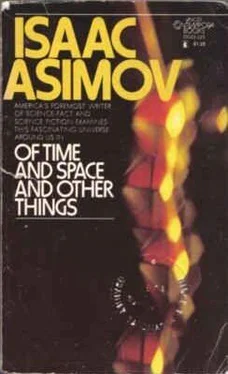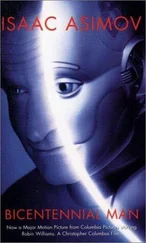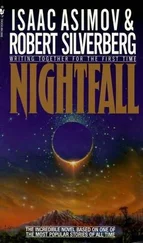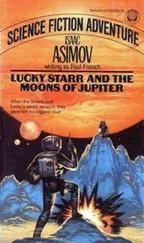Isaac Asimov - Of Time and Space and Other Things
Здесь есть возможность читать онлайн «Isaac Asimov - Of Time and Space and Other Things» весь текст электронной книги совершенно бесплатно (целиком полную версию без сокращений). В некоторых случаях можно слушать аудио, скачать через торрент в формате fb2 и присутствует краткое содержание. Год выпуска: 1972, ISBN: 1972, Издательство: Lancer Books, Жанр: Прочая научная литература, на английском языке. Описание произведения, (предисловие) а так же отзывы посетителей доступны на портале библиотеки ЛибКат.
- Название:Of Time and Space and Other Things
- Автор:
- Издательство:Lancer Books
- Жанр:
- Год:1972
- ISBN:ISBN: 0-447-33023-3
- Рейтинг книги:4 / 5. Голосов: 1
-
Избранное:Добавить в избранное
- Отзывы:
-
Ваша оценка:
- 80
- 1
- 2
- 3
- 4
- 5
Of Time and Space and Other Things: краткое содержание, описание и аннотация
Предлагаем к чтению аннотацию, описание, краткое содержание или предисловие (зависит от того, что написал сам автор книги «Of Time and Space and Other Things»). Если вы не нашли необходимую информацию о книге — напишите в комментариях, мы постараемся отыскать её.
Of Time and Space and Other Things — читать онлайн бесплатно полную книгу (весь текст) целиком
Ниже представлен текст книги, разбитый по страницам. Система сохранения места последней прочитанной страницы, позволяет с удобством читать онлайн бесплатно книгу «Of Time and Space and Other Things», без необходимости каждый раз заново искать на чём Вы остановились. Поставьте закладку, и сможете в любой момент перейти на страницу, на которой закончили чтение.
Интервал:
Закладка:
In ancient times, such timepieces simply did not exist and therefore even the best of the ancient geographers managed to get their meridians tangled up. Eratosthenes of Cyrene, who flourished at Alexandria in 200 B.c., thought that the meridian that passed through Alexandria also passed through Byzantium (the modern city of Istanbul, Turkey). That meridian actually passes about 70 miles east of Istanbul. Such discrepancies tended to increase in areas farther removed from home base.
Of course, once the circumference of the earth is known (and Eratosthenes himself calculated it), it is possible to calculate the east-west distance between degrees of longi tude. For instance, at the equator, one degree of longitude is equal to about 69.5 miles, while at a latitude of 40' (either north or south of the equator), it is only about 53.2 miles, and so on. However, accurate measurements of distance over mountainous territory or, worse yet, over stretches -of open ocean, are quite difficult.
In early modem times, when European nations first began to make long ocean voyages, this became a horrible problem. Sea captains never knew certainly where they were, and making port was a matter of praying as well as sailing. In 1598 Spain, then still a major seagoing nation, offered a reward for anyone who would devise a timepiece that could be used on board ship, but the reward went begging.
In 1656 the I)rutch astronomer Christian Huygens in vented the pendulum clock-the first accurate timepiece.
It could be used only on land, however. The pitching, roll ing, and yawing of a ship put the pendulum off its feed at once.
Great Britain was a major maritime nation after 1600, and in 1675 Charles 11 founded the observatory in Green wich (then a London suburb, now Part of Greater Lon don) for the express purpose of carrying through the necessary astronomical observations that would make the accurate determination of longitude possible.
But a good timepiece was still needed, and in 1714 the British Government offered a large fortune (in those days) of 20,000 pounds for anyone who could devise a good clock that would work on shipboard.
The problem was tackled by John Harrison, a Yorkshire mechanics self-trained and gifted with mechanical genius.
Beginning in 1728 he built a series of five clocks, each better than the one before. Each was so mounted that it could take the sway of a ship without being affected. Each was more accurate at sea than other clocks of the time were on land. One of them was off by less than a minute after five months at sea. Harrison's first clocks were per haps too large and heavy to be completely practical, but the fifth was no bigger than a large watch.
The British Parliament put on an extraordinary display of meanness in this connection, for it wore Harrison out in its continual delays in paying him the money he had earned and in demanding more and ever more models and tests. (Possibly this was because Harrison was a provincial mechanic and not a gentleman scientist of the Royal So ciety.) However, King George III himself took a personal interest in the case and backed Harrison, who finally re ceived his money in 1765, by which time he was over 70 years old.
It is only -in the last two hundred years, then, that the latitude-longitude gridwork on the earth became really accurate.
Even after precise longitude determinations became pos sible, a problem remained. There is no natural reference base for longitude; nothing like the equator in the case of latitude. Different nations therefore used different systems, usually basing "zero longitude" on the meridian passing through the local capital. The use of different systems was confusing and the risk was run of rescue operations at sea being hampered, to say nothing of war maneuvers among allies being stymied.
To settle matters, the important maritime nations of the world gathered in Washington, D.C. in 1884 and held the "Washington Meridian Conference." The logical de cision was reached to let the Greenwich observatory serve as base since Great Britain was at the very height of its maritime power. The meridian passing through Greenwich is, therefore, the "prime meridian" and has a longitude of 00.
The degrees of longitude are then marked off to the west and east as "west longitirde" and "east longitude."
The two meet again at the opposite side of the world from the prime meridian. There we have the 180' meridian which runs down the middle of the Pacific Ocean.
Every degree of latitude (or longitude) is broken up into 60 minutes ('), every minute into 60 seconds ("), while the seconds can be broken up into tenths, hun dredtbs, and so on. Every point on the earth can be located uniquely by means of latitude and longitude. For instance, an agreed-upon reference point within New York City is at 40' 45' 06" north latitude and 73' 59' 39" west longi tude; while Los Angeles is at 34' 03' 15" north latitude and 118' 14' 28" west longitude.
The North Pole and the South Pole have no longitude, for all the meridians converge there. The North Pole is defined by latitude alone, for 90' north latitude represents one single point-the North Pole. Similarly, 90' south lati tude represents the single point of the South Pole.
It is possible to locate longitude in terms of time rather than in terms of degrees. The complete day of 24 hours is spread around the 360' of longitude. This means that if two places differ by 15' in longitude, they also differ by 1 hour in local time. If it is exactly noon on the prime meridian, it is 1 P.m. at 15' east longitude and 1 1 A.M. at 151 west longitude.
If we decide to call prime meridian 0:00:00 we can assign west longitude positive time readings and east longi tude negative time readings. All points on 15' west longi tude become +1:00:00 and all points on 15' east longi tude become - 1: 00: 00.
Since New York City is at 73' 59' 39" west longitude it is 4 hours 55 minutes 59 seconds earlier than London and can therefore be located at +4:55:59. Similarly, Los Angeles, still farther west, is at +8:04:48.
In short, every point on Earth, except for the poles, can be located by a latitude and a time. The North and South Poles have latitude only and no local times, since they have no meridians. This does not mean, of course, that there is no time at the poles; only that the system for measuring local times, which works elsewhere on Earth, breaks down at the poles. Other systems can be used there; one pole might be assigned Greenwich time, for instance, while the other is assigned the time of the 180' meridian.
In the ordinary mapping of the globe, both latitude and longitude are given in ordinary degrees. However, the time system for longitude is used to establish local time zones over the face of the Earth, and the 180' meridian becomes the "International Date Line" (slightly bent for geographical convenience). AU sorts of interesting para doxes become possible, but that is for another article another day.
And what about mapping the sky? This concerned astronomers even before the problem of the mapping of the Earth, really, for whereas only small portions of the Earth are visible to any one man at any one time, the entire expanse of half a sphere is visible overhead The "celestial sphere" is most easily mapped as an ex tension of the earthly sphere. If the axis of the Earth is imagined extended through space until it cuts the celestial sphere, the intersection would come at the "North Celestial Pole" and the "South Celestial Pole." ("Celestial," by the way, is from a Latin word for "sky.")
The celestial sphere seems to rotate east to west about the Earth's axis as a reflection of the actual rotation of the Earth west to east about that axis. Therefore, the North Celestial Pole and the South Celestial Pole are fixed points that do not partake in the celestial rotation, just as the North Pole and the South Pole do not partake in the earthly rotation.
Читать дальшеИнтервал:
Закладка:
Похожие книги на «Of Time and Space and Other Things»
Представляем Вашему вниманию похожие книги на «Of Time and Space and Other Things» списком для выбора. Мы отобрали схожую по названию и смыслу литературу в надежде предоставить читателям больше вариантов отыскать новые, интересные, ещё непрочитанные произведения.
Обсуждение, отзывы о книге «Of Time and Space and Other Things» и просто собственные мнения читателей. Оставьте ваши комментарии, напишите, что Вы думаете о произведении, его смысле или главных героях. Укажите что конкретно понравилось, а что нет, и почему Вы так считаете.












